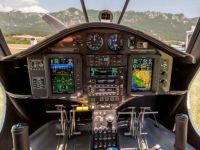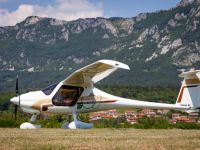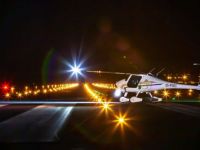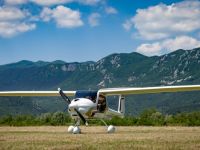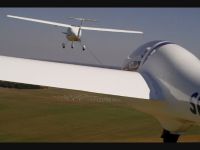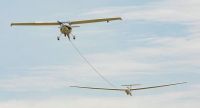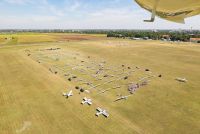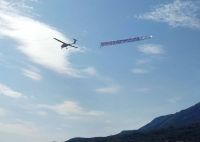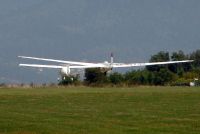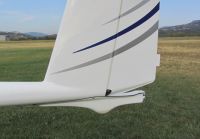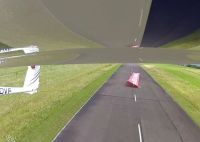THE EXPLORER IS FOR YOU BECAUSE YOU ARE LOOKING FOR...
BEST-IN-CLASS TECHNOLOGY
- IFR-ready with its dual-touchscreen glass cockpit, advanced autopilot, dual COM, hydraulic constant-speed propeller, airbrakes, heated pitot tube, and adjustable pedals and headrests.
- The best-equipped, affordable and comfortable 2-seat EASA Type-certified airplane in its category.
- More than 1500 aircraft from the same family are flying on all continents.
ADVANCED SAFETY FEATURES
- Equipped with a ballistic parachute rescue system and a haptic stall warning system, the Explorer provides the highest levels of safety.
- Approved for Night VFR and intentional spinning, it is a great airplane for advanced UPRT training.
VERSATILE ALL-IN-ONE AIRCRAFT
- Its airframe offers unbeatable aerodynamics while being robust for landing on unprepared terrains.
- It cruises at 2 NM per minute, climbs at 1000 fpm, is richly equipped and full of automation.
- It is the ideal personal travel airplane, aeroclub workhorse, and advanced trainer.
VIRUS SW 121A – EXPLORER
The Virus SW 121A – Explorer is the most advanced aircraft in its category. It is one step ahead of its older brother, the Virus SW 121. It is the result of over 30 years of Pipistrel’s experience in designing energy-efficient motor-planes, which follow the glider philosophy. The extraordinarily clean aircraft shapes enable flying with minimum power and noise, as well as the lowest fuel consumption, while keeping the performance on the same level or even better. Approved for intentional spins and Night VFR, the Explorer has the best flight characteristics in its category.
Structural efficiency is the sum of knowledge acquired in making 1500 aircraft of the same family of products. Certified and used in the most diverse environments all over the world, the entire SW 121 aircraft family fulfils the expectations of the most demanding customers who use the aircraft in hot & humid or extremely cold conditions, salty atmosphere close to the sea, or at very high altitude airports.
Even with all its advanced features and superb performance, the Explorer’s extremely efficient, environment-friendly design makes it very simple to fly and operate. The results are low running and maintenance costs, making it the most affordable choice on the market, either as an advanced trainer for the training organizations or as a personal travel aircraft for adventurous individuals.
The Explorer features the best equipment in the category, including:
- dual touch-screen glass cockpit
- full-featured autopilot
- dual radio
- ADS-B In & Out
- haptic stall-warning
- full airframe ballistic parachute rescue system
- certified engine capable of running on automotive fuel
- certified hydraulic constant speed propeller
- airbrakes for rapid descent
- glider towing hook
- approval for night VFR
- approval for intentional spins
- adjustable pedals and headrests
It is important to highlight Explorer’s key outstanding characteristics:
Fast and economic performance:
It is the fastest, most capable and the most economic aircraft in the CS-LSA category. Its speed performance allows it to fly at IFR speeds in/near complex airspaces and procedures, so it can be used for private use and training also at busy airports next to airliners, without slowing down the other traffic.EASA Type-Certificate:
It is the first and the only EASA Type-certified aircraft (no restrictions, category “normal”) in the CS-LSA category for night VFR operations, intentional spins and glider-towing, the only one with an autopilot, dual redundant ADAHRS units and airbrakes. It can be used for commercial operations and it is the ideal solution for PPL training.Safety based on modern technology:
The Explorer incorporates a haptic stall warning system, already in use in the Velis Electro and Velis Club, which alerts the pilot when approaching the stall. The full-airframe ballistic parachute rescue system adds the ultimate layer of safety in those situations when all other measures were ineffective.The Explorer (and the SW 121 aircraft family) is the first small aircraft in history to be type-certified with 3D printed parts.
Multiple learning purposes:
The Explorer can be used for different learning purposes: from being a very simple initial trainer at the beginning of the process to more advanced systems – such as constant speed propeller, negative flaps, airbrakes and autopilot – which can be included later. The instructor can slowly increase the difficulty of subjects in the later stages of training by gradual addition of new systems and options which the aircraft is certified for (intentional spins, longer routes and the use of auto-pilot, also during the night, thanks to the night VFR approval etc).The Explorer enables flight schools to substitute their multi-aircraft system, where they have to use at least one aircraft for basic training and another for advanced training, for one aircraft only. By combining all the capabilities typically obtained with many aircraft into a single one, they can drastically lower the initial costs of the training fleet.
“En-route IFR” training
The Explorer is packed with state-of-the-art navigation and communication equipment. As such it can also be partially used for “en-route IFR” training in several countries This makes the Explorer the only 2-seat aircraft in the market which enables training from the simplest beginnings to the difficulty of a twin-engine aircraft for obtaining higher pilot licences.Glider towing:
Being type-certified for glider towing makes the Explorer very useful for clubs as all-in-one aircraft for training, cross-country flight, and glider towing, offering the flight hours on an aircraft to be fully used.TECHNICAL DATA PIPISTREL VIRUS SW 121A – EXPLORER
| Model | VIRUS SW 121A – EXPLORER |
|---|---|
| ENGINE | Rotax 912 S3, EASA certified engine |
| max power | 100 hp, 73.5 kW |
| PROPELLER | 2-blade Hydraulic CS MTV-33-1-A/170-200 EASA certified |
DIMENSIONS
| length | 6.42 m (21.06 ft) |
| wingspan | 10.70 m (35.10 ft) |
| height | 1.90 m (6.23 ft) |
| wing area | 9.51 m² (102.4 ft²) |
| mean aerodynamic chord | 0.898 m (2.95 ft) |
| aspect ratio | 12.04 |
| positive flaps | 0°, +9.5°, +20°; marked (0), (+1), (+2) respectively |
| negative flaps | -5°; marked as (-) |
| center of gravity | 25% – 35% MAC |
WEIGHTS
| design empty weight | 371 kg (818 lb) |
| max take off weight (MTOW) | 600 kg (1323 lb) |
| design useful load | 229 kg (505 lb) |
| max baggage weight | 25 kg (55 lb) |
| fuel tanks capacity | 2 x 50 l |
| useful fuel | 2 x 49.5 l |
PERFORMANCE
| never exceed speed, VNE | 163 KTAS |
| max structural cruising speed, except in smooth air, VNO | 120 KIAS |
| max operating manoeuvring speed, VA | 100 KIAS |
| max flaps extended speed, VFE | 81 KIAS |
| max airbrakes extended speed, VAE | 100 KIAS |
| stall speed with flaps, VS0 | 47 KIAS |
| stall without flaps | 53 KIAS |
| towing limitations | glider up to 600 kg, to meet 500 m total take off distance (over 15 m obstacle) |
| best climb speed | 78 KIAS |
| max climb rate | 5.33 m/s (1050 ft/min) |
| take off distance at SL | 160 m (525 ft) |
| take off distance over 15 m obstacle at SL | 320 m (1,050 ft) |
| maximum take-off altitude | 3048 m (10,000 ft) MSL |
| maximum operating altitude | 5486 m (18,000 ft) MSL |
| permitted fuel | AVGAS, MOGAS or car fuel (min RON 95; EN228 Premium or Premium plus with max. 10% Ethanol) |
| fuel consumption at 2000 ft. 75% PWR cruise speed | 18.4 l/h (4.86 gal/h) |
| endurance @4000 ft., 65 % power) | 5 h 33 min (+30 min reserve) |
| range distance (+ 30 min reserve, @4000 ft., 65 % power) | 1189 km (642 nmi) |
| noise level (ICAO Annex 16, Chapter 10) | 70 dB(A) (measured) |
| flight load factor limits | 4.0 g+, 2.0 g- |
Note: Pipistrel reserves the right to revise this data sheet whenever occasioned by product improvement, government/authority regulations or other good cause.
Glider and banner towing
The Explorer is the best aircraft for towing banners and gliders! Why?
- Extremely strong and protected tow hook
- Low noise (allows operation in populated areas)
- Superb climb with the constant speed propeller
- Airbrakes to reduce the time of descent
- Excellent visibility from the cockpit
Safe and economic
- Proven base aircraft structure (1300 units flying all over the world in harshest conditions)
- No Avgas needed (using automotive fuel)
- Low consumption
- Low operating costs (less that 60 EUR/h including maintenance and depreciation)
The SW 121 has proven itself as the tow aircraft in many marketing campaigns, championships and flight clubs, towing all types of banners and gliders of all weights, among others as the official towplane of the junior world gliding championship!
Proven as the tow aircraft from grass to concrete runways, hot & cold conditions, low near-sea humid areas to high mountain resorts.
Capable to tow from short runways!
In standard atmosphere and asphalt runway, the 15 m obstacle is overflown:
- from 600m runway with 600 kg MTOM glider
- from 800m runway with 750 kg MTOM glider
Extremely strong and protected tow hook enables countless repetitions.
Low noise enables operation directly over populated areas, which is essential for good result of banner-towing campaigns.
